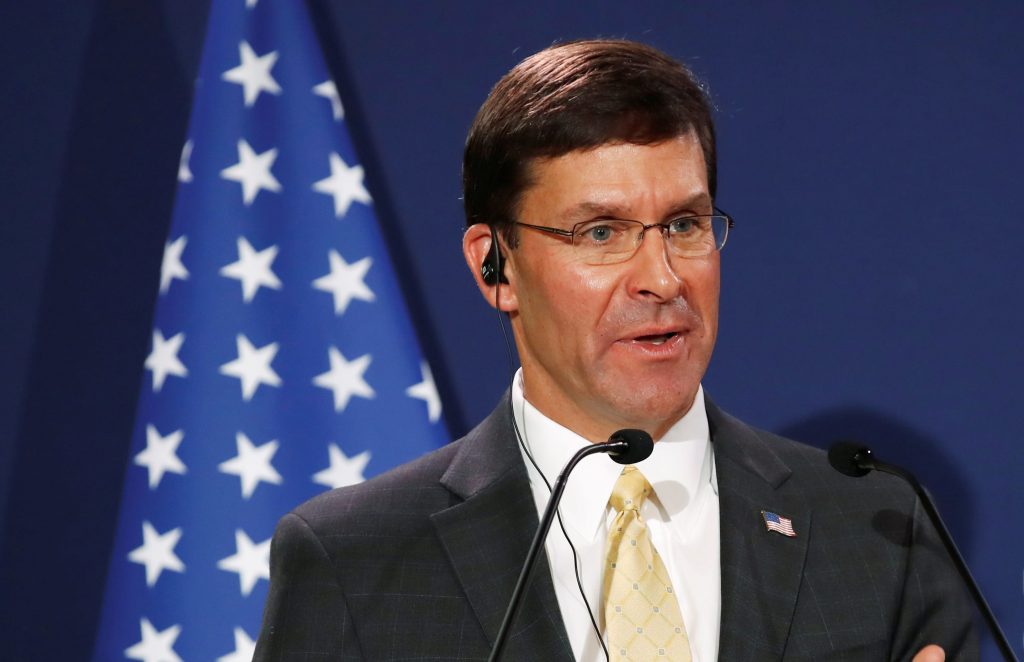
Surging energy prices Monday helped add to sentiment that the Federal Reserve suddenly might not be in such a hurry to cut interest rates.
While markets still see the central bank lowering its benchmark overnight lending rate by a quarter point at this week’s Federal Open Market Committee meeting, the case for continued cuts seemingly has gotten weaker. Traders in the fed funds futures market on Monday were pricing in a 34% chance that the Fed will stay put on rates; the probability was zero a month ago and just 5.4% a week ago, according to the CME.
That came amid some changing economic trends as well as inflation pressures caused by a 14% jump in oil prices. Rising inflation makes the Fed more likely to tighten policy or at least hold the line rather than to cut rates.
“While the push-through of inflation from oil prices to core prices is small, the jump in overall prices, in combination with signs that core inflation is already heating up, may make it more difficult for the Fed to cut rates further,” said Beth Ann Bovino, U.S. chief economist at S&P Global Ratings. “They had a cushion to fall back on with lower inflation — they could cut rates given inflation was low. Has the cushion been removed?”
Stronger economic data recently, featuring increases in consumer and business confidence as well as retail sales, has helped fuel some of the dovish sentiment. Some halting signs of easing tensions in the U.S.-China tariff battle also contributed.
And the firming inflation trend, such as the 2.4% annual rise in consumer prices, plus the likely boost from oil prices, complete a picture where Fed Chairman Jerome Powell at least could reiterate his position that this is a “mid-cycle adjustment” and not part of a longer easing trend.
‘We’re kind of done now’ on rates
“I can’t think of another time recently that the Fed had this much of an about-face within a month or a few weeks of their meeting date,” said Jim Paulsen, chief investment strategist at the Leuthold Group. “I still think they do 25 [basis points], but the case is weak.”
Economic data has been consistently better than expected dating back to early June, boosting the Citi Economic Surprise Index to its highest level since February. Paulsen said the changing state of affairs is going to present a challenge to Powell when he delivers his post-meeting news conferences and has to justify why the Fed is tightening amid an improving economy and stock market indexes near record highs.
“You could make a very cogent argument that ‘we’re kind of done now,'” Paulsen said. “Most of the time a lot of the drama is taken out of this. But I think there might be quite a lot of drama in that press conference.”
Powell has developed a history of saying things the market doesn’t want to hear.
In October 2018 he triggered a selloff when he said, amid a series of rate hikes, that the Fed was “a long way” from what it considers a neutral rate, indicating that more increases were on the way. He further rocked investors in December when saying the Fed’s balance sheet reduction program, which was helping to tighten financial conditions, was on “autopilot.”
And the market sold off yet again when Powell in July called that rate cut part of the mid-cycle adjustment. though that now does not look quite so off-base.
“He’s looking brighter by the day,” Paulsen said.
Powell ‘putting his foot in his mouth’
Markets will be watching the Powell remarks closely but also will be looking at the Fed statement and how the central bankers are measuring the oil price spike amid all the other economic trends.
“Powell has been putting his foot in his mouth at post-meeting press conferences. Will he suggest that this mid-cyle cut is at its end?” said Michael Arone, chief investment strategist for State Street Global Advisors.
The market and the Fed actually have come closer to together in recent days in terms of the outlook for rates in the longer term. But the two sides still remain a fair distance apart, as the Fed ultimately sees the rate cuts ending and the funds rate actually drifting higher, while the market is still pricing in about three more rate cuts before the cycle ends in mid-2021.
That dichotomy has kept an element of volatility in the markets as conditions develop.
Arone sees the U.S.-China dispute as key to what happens ahead.
“The market is pricing in a great number of cuts over the coming quarters than perhaps the Fed is willing to suggest at this point,” he said. “Investors have concluded that without the U.S.-China trade conflict, it’s probably not likely that the Fed would be cutting rates at this point.”

